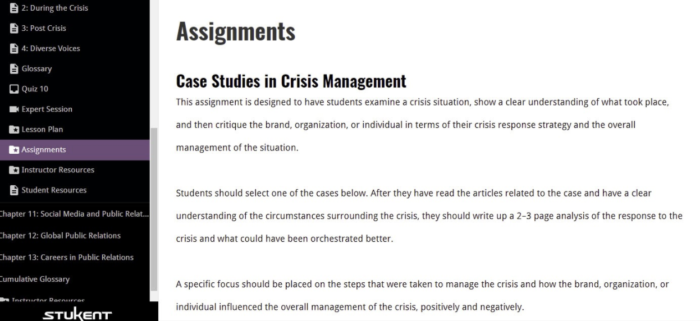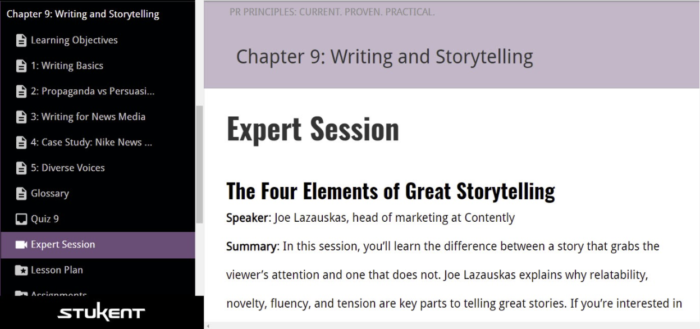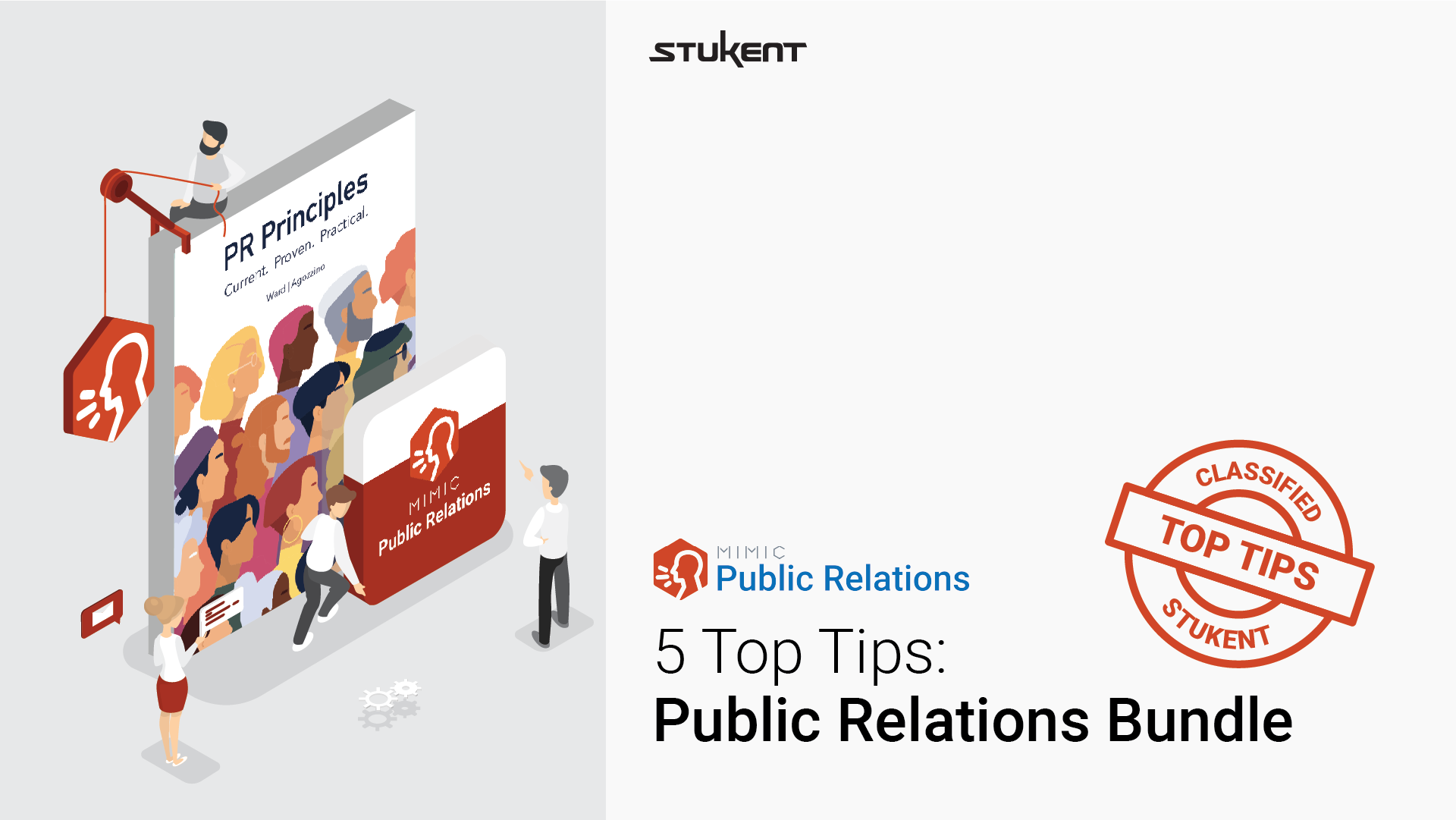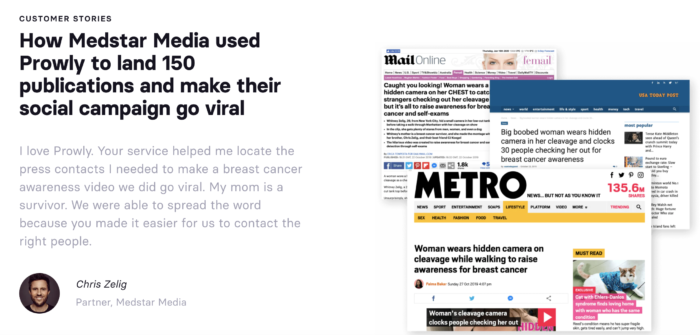Each of the articles in the “5 Top Tips” series lifts the hood on our digital marketing resources to help you gain superior insight on the topic covered. Stukent courseware gives you a fast track to engagement. Your students will learn quicker, and they will learn more. It’s all part of Stukent’s mission to help educators help students help the world.
Don’t miss this: When you combine the digital textbook with the unparalleled Mimic Public Relations simulation, you can walk students through the complexities of public relations work while delivering a high-impact experience along the way.
Let’s look at five “top tips” you can leverage to make your classes unforgettable.
Top Tip #1: Access to Prowly
Each chapter of the digital textbook includes an assignment, and each of the assignments helps students gain hands-on practice in the various tasks required in an effective public relations strategy.
All these exercises are engaging, but the assignment in Chapter Nine adds a special element to the mix: Your students get 30 days of (free) access to the Prowly PR and Media Relations software. The Prowly platform provides everything needed to plan, outline, and create a news release — and that’s exactly what your class will be asked to do in this course.
Top Tip #2: Crisis Management Case Studies
Public relations work is always important, but it becomes critical when a crisis occurs. That’s why “PR Principles” devotes an entire chapter to the topic. Your students are given three case studies that focus on a crisis situation, then asked to conduct a close examination of one (whether your choice or theirs). After gaining a clear understanding of the circumstances, they will evaluate the response strategy actually employed and the overall management of the event.
Your class will learn about the North Face Wikipedia hack, South Dakota’s “Meth, We’re On It” campaign, and Boeing’s struggle to manage the 737 crisis. These stories aren’t only interesting — they give student’s access to real-life incidents and show them how the stakeholders involved reacted. One section of the assignment asks students to create a “holding statement” and FAQ list suitable for release during those first few tone-setting hours of a crisis.

Top Tip #3: Hands-on Practice Readily Available
Professors who supplement the digital textbook with the Mimic Public Relations simulation frequently tell us their students love the real-life practice provided. The simulation guides students through the process of building a press release, exposes them to tension-building public relations crisis situations, requires them to make informed decisions about public relations strategy, and adds an element of workplace dynamics via co-worker communications and email creation.
From practice building email pitches and selecting the best media contacts to creating social media content, the simulation is a perfect pair for the “PR Principles” digital textbook. We agree with the following observation by Professor Jamie Ward, co-author of the book and associate professor of public relations at Eastern Michigan University:
There is nothing like this on the market. Practitioners are using certifications to build on student knowledge, but the available certifications do not focus on relationship building, PR writing, crisis communication, or AP Style. Mimic Public Relations incorporates all those areas.
Students will get weekly briefings by “the boss” and a Net Promoter Score that gauges their abilities. One more thing: Assignments are auto-graded and include personalized feedback for each student.
After completing the simulation, students get a list of sample resume line items to use as talking points for those soon-coming job interviews.
Here’s where to get instructor access (free) to the Mimic Public Relations simulation: Mimic Public Relations.
Top Tip #4: Expert Sessions Included
Students love to hear from industry leaders, but you won’t need to arrange an in-person visit with the Scoutmob brand creator or the marketing manager at Contently. Both come to your class via video.
Scoutmob’s Liza Dunning shares her hard-gained advice about how to define and develop brand voice. Dunning covers the difference between voice and tone, stresses the importance of differentiation, and helps students understand the importance of defining and dedicating their content’s mission.
In the second expert session, Contently’s Joe Lazauskas shows students how they can create stories to get and maintain attention. Pulling from his book, “The Storytelling Edge,” Lazauskas stresses the importance of relatability, novelty, fluency, and tension to telling effective stories. This expert session includes a follow-up quiz.

Top Tip #5: Diverse Voices Throughout
Digital textbooks allow frequent updates to ensure your pupils are getting up-to-date information on current trends in the subject matter. Since concerns about diversity are in the corporate spotlight right now, wouldn’t it make sense to include discussions about the topic in a public relations course? Stukent has you covered.
Each chapter of “PR Principles” includes a Diverse Voices section where experiences related to racial equality, gender identification, and other important social issues are approached in a way that will spur conversations between class members and help students connect the dots between social concerns and the world of business … especially public relations.
Stukent pioneered the concept of combining digital textbooks and Mimic simulations as a resource for educators. When the idea first took form, digital assets that enabled professors to keep up with the rapidly changing world of digital marketing were a welcome addition to the classroom. We’re now at a point where they are widely considered essential.
You can find out more about us by visiting Stukent.com and by using one of our contact methods to speak directly with a Stukent staff member.







